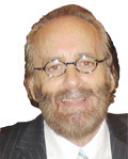The massacre in Aurora, Colorado, carried out in front of movie heroics by an imaginary superhero, was witness to REAL HEROISM, the ultimate act of sacrifice, voluntarily giving one’s life for another. No comic-book heroes in that audience, but people who made that ultimate, irreversible, sacrifice. They were young heroes who had a life ahead of them, giving their most precious possession in a brief moment of profound decision, undoubtedly the most profound and least understood act in the human repetoire.
What underlies such heroism? What do we know about it? What leads someone to this heroism? Truthfully, we don’t know. But indulge me as I put forth some proposals.
I believe a broad distinction can be made between Big H Heroism and small h heroism. Big H Heroism involves significant risk, which could include death, injury, imprisonment, or other serious or significant consequences. This type of heroism can have a major impact on oneself or others, or the course of history itself. Small h heroism, something which Fred Rogers and Mister Rogers Neighborhood so well exemplified, is everyday heroism, helping others, doing good deeds, showing kindness, etc., where serious harm or major consequences are not usually a result.
Focusing on Big H Heroism, I believe there are at least three broad categories of that: 1) Situational Heroism, 2) Life-Long Heroism, 3) Professional or “911” Heroism. Situational Heroism is where a Big H Heroic act is done by an individual who may never have shown such extreme behavior in the past and may possibly never show it again, depending on whether he/she survives and on the situations that might arise in the future. This form of heroism is difficult to study and understand as it may only occur once, a psychologist is almost never there at the time, and of course replication is a canon of credible science. Life-Long Heroism is more clear in its course and characteristics. M.L.King, Jr., and Ghandi are exemplars of this type, each of whom pursued strong positions on profound and controversial social issues and ideals, where the stakes were high, and they paid with their lives. Professional or 911(emergency call #) heroes are those for whom heroism is often a part of the job description, the career they have chosen, such as firefighters, police, military, EMT. Often such individuals are in part attracted to these careers for the thrill value, the exciting and risky qualities.
The heroes of the Batman movie massacre would seem to fall mostly under Situational Heroism. However two of them might also be seen as Professional/911 heroes in that they were members of the U.S.military.
What might underlie Big H Heroism? I believe that as with most human behavior, the causes are multiple, a recipe that has more than one ingredient, and that these ingredients can differ somewhat from one hero to another. However, I believe two ingredients are included in most Big H Heroism, and those are risk-taking/risk-tolerance, and generosity (compassion, kindness, altruism, empathy). If an individual is significantly risk averse, he/she is very unlikely to place their life at risk for the sake of someone else. They might want to do it for a host of good reasons, but they simply cannot do it. The second major component, generosity, the G-Factor, is likely essential to many Big H behaviors. It may be a motivational force in the great heroic act. A mean-minded ungenerous risk-taker is unlikely to risk the ultimate sacrifice for someone else. There are undoubtedly other ingredients in the Big H Heroism recipe that might include skill and expertise, honesty/integrity, idealism, and so on.
The significant role of risk-taking and risk-tolerance brings genetics and biology into the discussion of Big H Heroism. There is evidence for some degree of heritability in risk-taking, a range of neuro- chemicals and processes have been implicated (e.g., dopamine, testosterone, adrenalin) and possible brain structures. Personality and social factors are involved,certainly including the risk-taking personality (the “Type T Personality”). Family effects, peer influences, and broader societal forces also have a role.
One can advance causal proposals for such Big H Heroism, but as not a lot of the research is conducted at or near the time and place of the action, one is left with some scientific doubt. The heroes who survive often have difficulty articulating why they did it, often saying “I simply had to do it”, or “I just did it, I didn’t think about it.”. This ultimate sacrifice is the ultimate puzzle for a motivational psychology. Interviewing those who did it and survived is essential, done close to the moment. We can hope that this type of research will accumulate toward a more comprehensive account of this transcendent behavior.
Frank Farley, PhD is L.H.Carnell Professor, Temple University, Philadelphia, and Former President, American Psychological Association. He can be reached at (215)668-7581 or frank.farley@temple.edu


